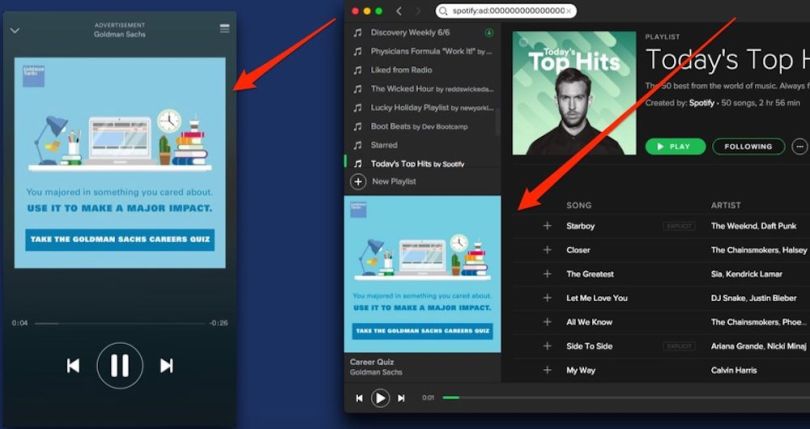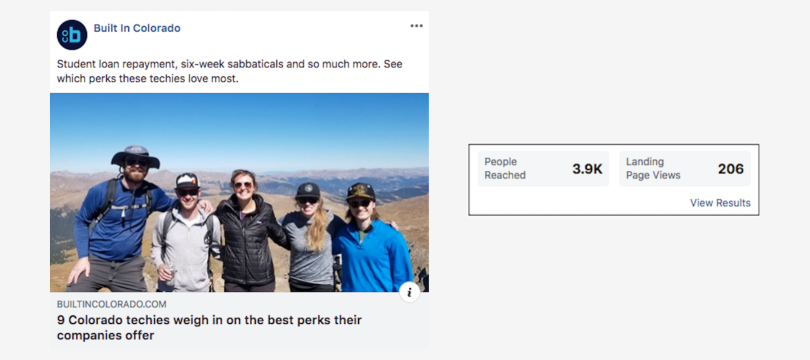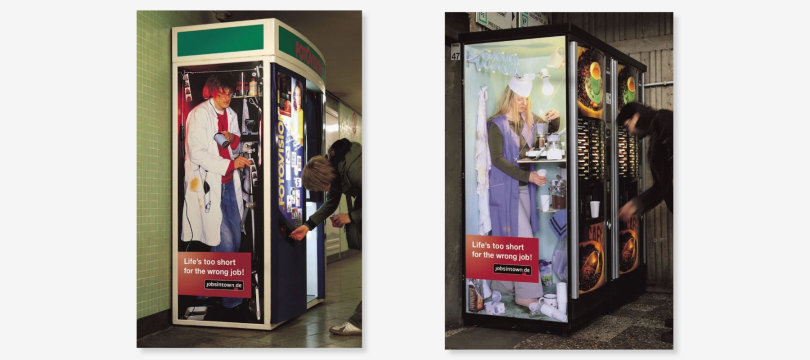The process of finding and attracting great talent is complex, and that’s where recruitment marketing comes into play. Similar to how marketers attract clients, recruiting and hiring teams need to proactively promote their employer brand to draw in high-quality job candidates.
People are key to the growth and success of any company, and building a team of diverse yet complementary personalities, passions and skill sets is one of the most challenging aspects of any business. Because in-person networking is less popular than it used to be, it’s more difficult to get the attention of potential applicants and communicate the qualities that set an employer apart. That means crafting a successful recruitment marketing strategy is more important than ever.
What Is Recruitment Marketing?
Recruitment marketing is the process of promoting your employer brand with the use of marketing methodologies throughout the recruitment life cycle to attract, engage and nurture relationships with qualified talent.
What Is Recruitment Marketing?
Recruitment marketing is a strategic method of attracting top job candidates by using marketing best practices to promote and communicate the employer brand.
Thorough planning, a clear vision of employer brand and targeted content are key to recruitment marketing. Being able to communicate the specifics of vacant positions is just as important as being able to explain your organization’s mission and values.
Recruitment doesn’t stop at making people aware that your company is hiring and has benefits and perks. Recruiting teams need to continue nurturing the connections their marketing efforts build in order to encourage active participation in their talent pipeline.
To attract top talent, you need to think like a marketer. Why? Because candidates shop for jobs the way they shop for brands. Download this guide to learn how to attract the talent you need.
Recruitment Marketing Funnel
The recruitment marketing funnel illustrates the journey from generating initial awareness of the employer brand to fostering job candidates who become active participants in the hiring process by submitting applications and interviewing for open positions. It covers four stages.

Stage 1: Increase Awareness
Top talent can be found all over the world. However, in today’s job market, the majority of candidates are passive, meaning they aren’t looking for jobs.
In order to get great candidates to apply for an open role, companies need to first market their company as a potential employer on platforms where passive candidates spend their time.
Above everything, it’s crucial to create great content that candidates will actually want to read, listen or watch and make your company stand out as a desirable employer.
Stage 2: Generate Interest
Now that you’ve got their attention, you’ll want to provide prospective candidates with information that will increase their interest in your company. You’ll need to have a content game plan that is consistent and closely tied to your employer branding campaign.
The last thing you want to do is lose candidates because they’ve forgotten about your company or they aren’t clicking with your content.
Mapping out a robust content calendar with set deadlines will both ensure your story is being told in a thoughtful way, and it’s a surefire way to continuously generate interest among passive and active candidates.
Stage 3: Nurture the Decision
Your net is cast, now it’s time to reel ‘em in. Candidates have consistently shown interest in your company, but what differentiates your opportunity from all the other fish in the sea? At this point in the funnel, you’ll want to provide more specific information on your company as a potential employer.
Now’s the time to promote your open roles, benefits, perks, compensation and anything else a candidate needs to know before making an informed decision to apply.
Stage 4: Drive Action
While candidates may seriously consider your company in their next career move, there are several obstacles that prevent candidates from applying.
First of all, applying to jobs takes a significant amount of time. Candidates must create role-specific resumes, cover letters and portfolios that may never be reviewed. One solution — simplify the application and decision process. Cut out any unnecessary qualification and application requirements, and give applicants all the juicy details of your offer — yes, that includes salary info.
Even if a candidate makes it this far and applies but ultimately opts out of doing an interview, don’t stop there. Add them to your candidate pool. It may not have been the right time or circumstance for them to pursue your company, but they may be interested in the future.
Your candidate pool is also likely growing exponentially if you are opening your positions up to remote workers across the nation and globe.
How to Develop a Recruitment Marketing Plan
Before you even start thinking about developing a recruitment marketing plan, you need to define your employer brand. Employer branding is crucial for managing and influencing your reputation as an employer of choice and therefore, should encompass every aspect of your recruitment marketing plan.
Once you’ve got your employer branding down with a clear mission statement, core values and employee value proposition, start creating your plan with these six recruitment marketing tips.
6 Steps to Create a Recruitment Marketing Plan
- Set goals. Do you want to add hires, or increase the candidate pool?
- Define roles. Set specific qualifications and expectations.
- Establish target candidates. Outline the ideal persona to fill the role.
- Identify recruitment channels. Is social media or events the best to use?
- Allocate resources. Document expense and results of paid or organic services.
- Create a content calendar. Note team assignments with deadlines.
1. Set Recruitment Marketing Goals
Decide on goals for your recruitment marketing campaign. Examples could be increasing the candidate pool or connecting with potential applicants who better match the skills and experience needed to fill open roles. To assess how effective your efforts are, establish a system for measuring progress, such as tracking metrics like the number of applicants per opening or application completion rate.
2. Define Job Requirements for Open Roles
Formulate job descriptions that explicitly explain the responsibilities and the required versus preferred qualifications needed for the position. Sit down with your team and relevant managers or department heads to ensure everyone is on the same page about what will be communicated to prospective candidates.
3. Outline the Ideal Candidate Persona
Develop a candidate persona that covers the ideal skills, characteristics and experience you’re hoping to find in the person who will fill a job opening. The candidate persona can include factors like education, current employment status, geographic location, communication style and career goals. Conducting research and surveying the employees who will be directly managing or working alongside that person can help to fill in some of the blanks.
4. Identify Recruitment Marketing Channels
Based on your recruiting goals and the types of positions you’re hiring for, identify the most valuable marketing channels to target. Will you find the best people for the job on LinkedIn? Should you try to create Facebook groups to build a community of candidates? Or will your efforts be best served by in-person networking?
5. Allocate Recruiting Resources
Assess the resources available to your team and then determine the costs and necessary manpower associated with potential recruitment marketing activities. Do research and data analysis to understand the value that comes from different channels and tactics before deciding how to most efficiently allocate money, people and time to produce worthwhile recruitment marketing campaigns.
6. Create a Recruitment Marketing Content Calendar
Create a content calendar to maintain a schedule of when and how often content will be emailed to subscribers or promoted on social channels. This practice ensures a diversity of content while also holding team members accountable for fulfilling their recruitment marketing responsibilities. Keeping a content calendar can also provide a helpful record to inform future recruitment marketing activities.
15 Best Recruitment Marketing Examples
When it comes to recruitment marketing, we’ve seen it all. There’s a lot that goes into creating an effective plan, so we’re sharing some of the best recruitment marketing campaigns, tactics and examples that we’ve learned from our experience as well as from other recruitment experts.
Snapchat and Huddle Target Competitors’ Talent
Snapchat used its own social media app to target engineering talent at Uber and Pinterest with geo targeting and creative filters. People using the Snapchat app while they were at Uber or Pinterest headquarters could use these punny filters.

Huddle took a different approach by driving around several moving billboards outside the Microsoft office to catch talent on their way in and out of work.

Tailored Social Posts Make the Most of Content
Every social media platform has its own unique nuances and culture, and what works on one may fall flat on another. We always consider the platform when crafting social media posts, and while creating two or three separate versions may add a little time, it’s well worth the effort.

The Facebook and LinkedIn posts above lead back to the same content, but each one features unique language and imagery tailored to the platform.
Goldman Sachs Targets Candidates With Quizzes
You know the drill. Once you’ve established your target audiences, you can identify the channels to target your recruitment marketing efforts. Here are a few examples of companies that nailed their targeting efforts.

Goldman Sachs clearly knew its target candidate demographic when they placed ads on Spotify with the caption “You majored in something you cared about. Use it to make a major impact. Take the Goldman Sachs Careers Quiz.” If BuzzFeed has taught us anything, it’s that Millennials are entertained by quizzes.

Meanwhile, marketers, politicians and now recruiters are using the popular dating app Tinder to target candidates on a local level. Talk about reaching candidates where they spend their personal time.
Paid Social Ads Reach More Users for Less Money
Sure, organic posts are free and they have the potential to yield great conversions, but a little paid boost never hurts. You’re probably already spending thousands on HR tech tools and job boards, so why not spend a few hundred on social ads to reach a highly targeted audience?

This content proved popular when posted organically, so we decided to spend a little money to get it in front of even more people.
For less than what many people spend at Starbucks each week, we connected with another 4,000 highly targeted potential candidates and drove several hundred of them back to our site. That can be the difference between making a great hire in record time and a never-ending process that goes nowhere.
German Company Creates Out-of-the-Box Content
No one said recruitment has to be boring. And if you want to attract bright and innovative candidates, you better put your money where your mouth is. Here are a few examples of recruitment marketing campaigns that stepped outside of the box.

A German company called jobsintown.de designed site-specific stickers with the phrase “Life’s too short for the wrong job” all over the city, depicting images of people working behind everyday machines. The high-quality images have a quick wit that certainly compete with their website’s viewership and average time on page.
Print Content Reaches Candidates Offline
Nowadays physical print has a certain quality that is more present than digital copy. In addition to your digital recruitment marketing efforts, take advantage of print opportunities like this one.

If you know where talent spends their free time offline, it might be worthwhile to deploy paper ads on bulletin boards, like this tear off flyer. To take it a step further, they entice computer engineer talent with an equation to challenge their problem solving abilities before they can reach out.
Google Poses Challenge to Lure Talent With the Right Skills
Skills testing is nothing new, these companies turned their tests into recruitment marketing magic.

An oldie but a goodie, this inconspicuous Google ad led those who could solve the riddle to 7427466391.com. On the website users were also prompted with another equation that when solved correctly, would land them an interview with the company.
Microsoft Builds Talent Community on Social Media
When it comes to recruitment marketing, piggybacking on your company’s corporate social media accounts simply won’t cut it. Your corporate accounts are designed to appeal to customers, not candidates, so you’ll need dedicated social media profiles for recruiting. Developing a community of followers isn’t easy, but it pays off in the long run.

Just ask Microsoft. The company’s talent acquisition team has created a Facebook community. That’s half a million extra candidates in their pipeline, whenever they need them.
Taking Advantage of Meme Culture Captures Attention
Memes are hands down the 21st century’s greatest invention. To recruitment marketers benefit, memes are super specific to cultures and like-minded groups of people, making them ideal for targeting candidates.
The tricky part is you have to constantly be aware of what’s trending and why so that your reference is appropriate and hits the right note.

Lennon Wright nailed this adaptation of the “Distracted Boyfriend” meme for their recruitment marketing plan. It’s creative and certainly hit a funny bone for their target talent on Instagram. This simple post received nearly 600 likes.
Users Engage With Recruitment Marketing Content Over Job Descriptions
Creative content captures the attention of active candidates and gives passive candidates a reason to further explore your company like nothing else can. Don’t believe us? On average, our users spend 250 percent more time engaging with content than with job descriptions.

Think about it from their perspective. If you were a candidate, would you spend more time with this article full of tips about applying to specific companies or a list of bullet points on a standard job description.
Newsletters Get Recruitment Marketing Content in Front of More Passive Candidates
Sending personalized, one-to-one emails will always be part of a recruiter’s job, but even with the best automation it just isn’t scalable. Creating recruiting newsletters allows you to build a list of subscribers and communicate with all of them with a single click.
Weekly newsletters allow you to share valuable content with tens of thousands of passive candidates at a time. As a result, you’re able to spend more time creating great content and less time managing our inbox.
Salesforce and Apple Impress Candidates With Events
People have plenty of options for how they spend their free time and hosting a traditional job fair or boring networking event won’t open the floodgates of top talent.
Creating a riveting online or in-person event will not only leave a lasting impression on attendees, but it will reverberate throughout their personal and professional networks via the best source — word of mouth. And that, in turn, may lead them to your careers page to apply.
Salesforce, for example, held its 2021 user conference Dreamforce as an in-person and online event. Apple, meanwhile, held its annual worldwide developers conference (WWDC) as an online-only event.
Strategic Event Promotion Gets People in the Door
Hosting an online or in-person event is only half the battle. Getting people to actually log-on or show up is the real challenge. People aren’t going to attend an event that they don’t know about, so it’s crucial that you promote your event in a thoughtful and strategic way.

Target your announcements to different social media channels based on the audience you are trying to reach. Also ask event speakers to promote the event on their social media, as well.
Dedicated Recruitment Marketing Team Emphasizes Quality Over Quantity
Not all videos are created equal. Just like written content, candidates don’t want to sit through poorly produced videos that don’t answer their questions. It’s much better to create a few well-thought-out videos that will keep viewers attention and satisfy their curiosity.
We invested in a dedicated team to ensure that every video we create reflects each company in an authentic and high-quality manner. Keep in mind that not everyone is comfortable on camera, so it’s important that you feature willing participants in a relaxed atmosphere.
Hyperloop One Gains Exposure by Promoting Recruiting Video on Multiple Channels
Congrats! You created a sweet video that candidates are excited about. That’s great, but you aren’t done yet. Now it’s time to share and promote your video content across all channels, including your careers page, social media platforms and email campaigns. We always cross promote video content to ensure candidates can easily find and engage with it.

Hyperloop One was able to significantly increase exposure of this video by featuring it on their website, Facebook page and YouTube channel. The best part? It only took a few minutes. The heavy lifting is over, and they have a great piece of content that will engage viewers and remain relevant for much longer than most written pieces.
To attract top talent, you need to think like a marketer. Why? Because candidates shop for jobs the way they shop for brands. Download this guide to learn how to attract the talent you need.




